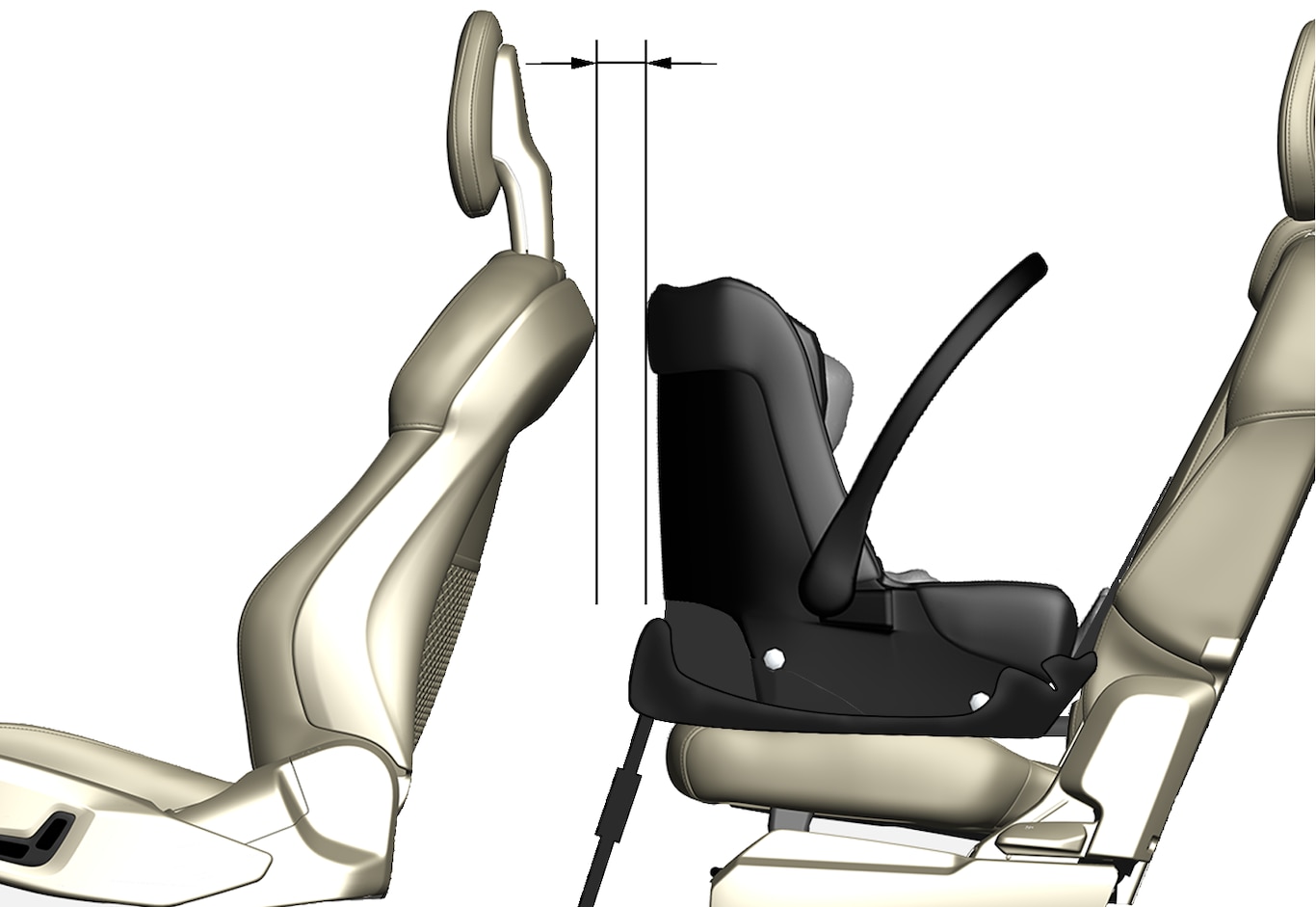Child seat mounting
Warning
Booster cushions/child seats with steel braces or some other design that could rest on the seatbelt buckle's opening button must not be used, as they could cause the seatbelt buckle to open accidentally.
Do not secure the straps for the child seat into the seat's horizontal adjustment bar or in springs, rails or beams under the seat. Sharp edges may damage the straps.
Do not allow the upper section of the child seat to rest against the windscreen.
Note
When using child safety equipment, it is important to read the installation instructions included.
In the event of questions when fitting child safety equipment, contact the manufacturer for clearer instructions.
Note
Note
Observe caution when fitting child restraint systems so that sharp edges or protruding parts of the child restraint system do not scratch the interior of the car.
Long-term installation and use of child seats may cause wear and tear on the car's fittings. Volvo recommends using the kick guard accessory to protect the car's fittings.
Regardless of location
- Only use child seats that are recommended by Volvo, are universally approved or are semi-universal, and where the car is included on the manufacturer's vehicle list.
- If the child seat is equipped with support legs, always fit the support leg/support legs directly to the floor. Never fit a support leg to a footrest or other object.
- When fitting adjustable, rear-facing child seats, the child seat must be adjusted so that the older the child is, the more upright the position is.
Installation in the front seat
- When using front-facing booster seats and loose booster cushions where the child uses the car's seatbelt, raise the front seat if necessary so that the seatbelt strap can be tensioned around the child's hips.
- When fitting rear-facing child seats, check that the passenger airbag is deactivated.
- When fitting front-facing child seats, check that the passenger airbag is activated.
- When fitting rear-facing child restraint systems, lower the front seat to its lowest position unless otherwise specified in the relevant table for the location of child restraint systems.
- When fitting rear-facing child restraint systems, slide the front seat forward so that the child restraint system is in contact with or comes as close as possible to the instrument panel.
- ISOFIX child seats can only be fitted when the car is equipped with the ISOFIX console1 accessory.
- If the child seat is equipped with lower straps, Volvo recommends that the lower mounting points are used with these1.
- The ISOFIX guide can be used in order to facilitate installation of an ISOFIX-anchored child restraint system.
Installation in the rear seat
- A child seat with support legs must not be fitted in the centre seat.
- The outer seats are equipped with the ISOFIX fixture system and are approved for i-Size1.
- The outer seats are equipped with upper mounting points. Volvo recommends that child seat's upper straps should be pulled through the hole in the head restraint before being tensioned at the mounting point. If this is not possible, follow the recommendations from the child seat manufacturer.
- If the child seat is equipped with lower straps, never adjust the position of the seat in front after the straps have been fitted in the lower mounting points. Always remember to remove the lower straps when the child seat is not installed.
